- Books Name
- Class 6 Science Book
- Publication
- PathSet Publications
- Course
- CBSE Class 6
- Subject
- Science
Some Plant Fibres
Cotton (Fig. 4.3), jute, coir, silk cotton, hemp, and flax are examples of plant fibres. Denim, used to make jeans, is made from cotton.
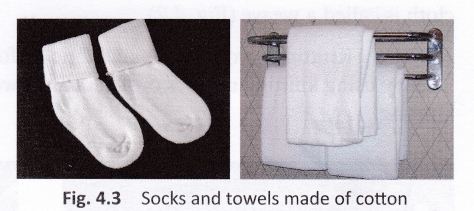
Cotton:
The cotton plant is a shrub. It grows well in black soil and warm climate. It needs moderate rainfall. Cotton is a soft fibre that grows around the seeds of the cotton plant. A variety of textile products are made from cotton. In India, ‘lchadi’, a coarse hand-woven cloth, is made from cotton.
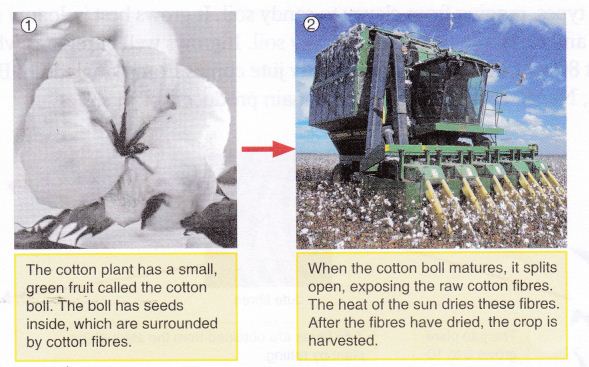
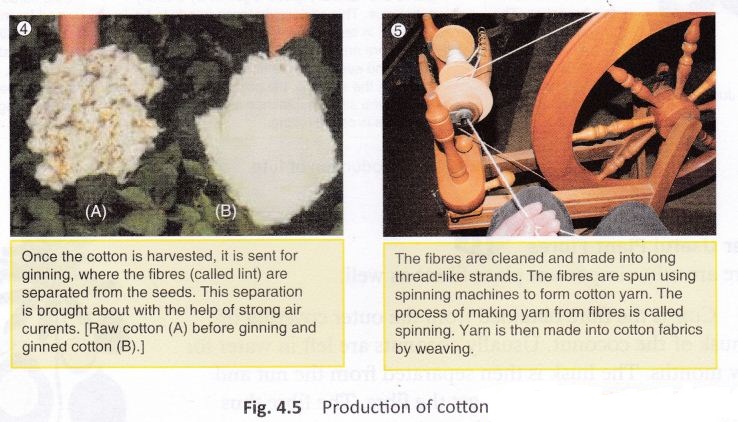
- Cotton plants are grown in fields usually at places having a warm climate and black soil.
- Some cotton producing Indian states are Punjab, Gujarat, Madhya Pradesh, Karnataka, Maharashtra etc.
- Cotton plants bear fruits the size of a lemon called Cotton Balls which burst open upon maturing and the seeds wrapped up in cotton fibre become visible. Cotton is generally picked by hand from these balls.
Ginning: Ginning of cotton can be defined as the process of separating cotton fibres from cotton seeds. Traditionally, ginning used to be done by hand but these days machines called double roller cotton ginning machines are widely in use.
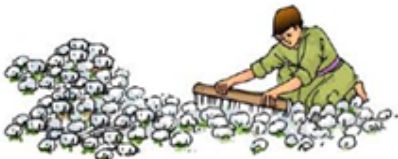
In the above figure, we see a boy ginning by hand.
2. Jute
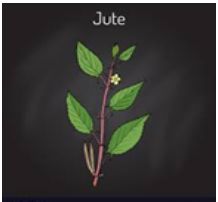
A jute plant
Jute:
Jute is a fibre obtained from the bark of the jute plant (Fig. 4.6).
- It can be grown in different soil types, ranging from clayey to sandy soil.
- It grows best in loamy soil (mixture of sand, silt, and clay), sandy soil, and clayey soil.
- It grows well in regions where it rains a lot.
- Almost 80% of the world’s high-quality jute comes from Bangladesh. Bangladesh, India, China, Nepal, and Thailand are the main producers of jute.
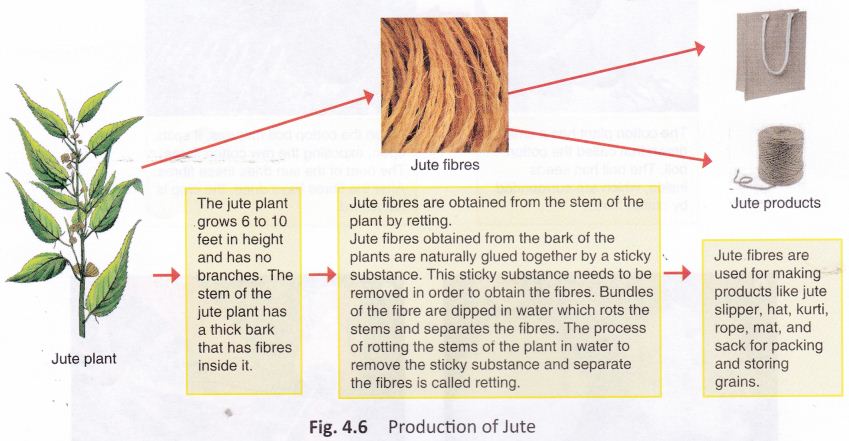
- Jute fibre is obtained from the stem of the plant.
- Unlike cotton, jute is cultivated in the rainy season.
- Some jute producing Indian states are Bihar, Assam and West Bengal.
- The plant is harvested during its flowering stage.
- The stems of these harvested plants are then soaked in water for four to five days
- The stems are left to rot and then the fibres are picked out by hand.
- Yarn: Yarn is the spun thread that is made from fibres in order to produce a fabric.
- Other Useful Plant Fibres:
There are other important plant fibres as well. - Coir: Coir is the fibre obtained from the outer covering or the husk of the coconut. Usually coconuts are left in water for a few months. The husk is then separated from the nut and beaten with wooden mallets to get the fibre. The fibre thus obtained is spun and dyed and is ready for weaving. Coir is used to make several household products like rope and floor covering and also as a stuffing in mattresses and pillows.

- Silk cotton: Silk cotton is another plant fibre that is commonly used as a stuffing in pillow, sleeping bag, and life jacket. This fibre is obtained from the silk cotton tree, also called kapok.
The fruits of the kapok tree contain fibres that are light and fluffy (like cotton). When the fruit ripens, it bursts open, releasing the fibres. - Hemp: Hemp fibres are obtained from the stem of the hemp plant. Hemp fibres are used in the production of ropes, carpets, nets, clothes, and paper.
Flax Fibres obtained from the stem of the flax plant are woven to make a fabric called linen. Flax fibres are also used in the production of rope and high-quality paper.

 Param Publication
Param Publication
 PathSet Publications
PathSet Publications
